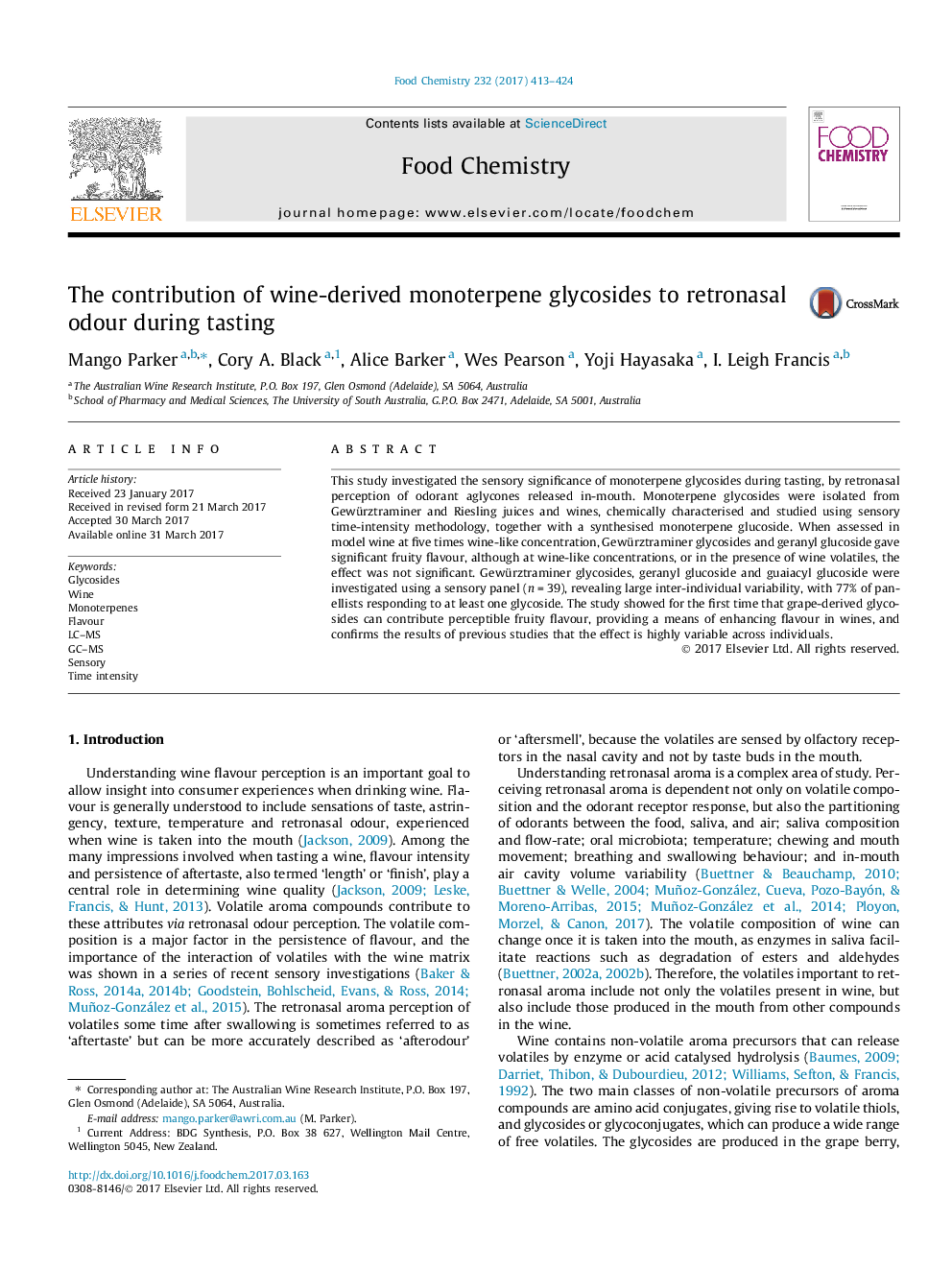| Article ID | Journal | Published Year | Pages | File Type |
|---|---|---|---|---|
| 5133422 | Food Chemistry | 2017 | 12 Pages |
â¢Gewürztraminer and Riesling glycosides were characterised by LC-MS and GC-MS.â¢Glycosides from Gewürztraminer gave a fruity flavour when tasted in model wine.â¢The flavour effect was not significant at wine-like concentrations.â¢There was a large inter-individual variability in flavour response from glycosides.
This study investigated the sensory significance of monoterpene glycosides during tasting, by retronasal perception of odorant aglycones released in-mouth. Monoterpene glycosides were isolated from Gewürztraminer and Riesling juices and wines, chemically characterised and studied using sensory time-intensity methodology, together with a synthesised monoterpene glucoside. When assessed in model wine at five times wine-like concentration, Gewürztraminer glycosides and geranyl glucoside gave significant fruity flavour, although at wine-like concentrations, or in the presence of wine volatiles, the effect was not significant. Gewürztraminer glycosides, geranyl glucoside and guaiacyl glucoside were investigated using a sensory panel (n = 39), revealing large inter-individual variability, with 77% of panellists responding to at least one glycoside. The study showed for the first time that grape-derived glycosides can contribute perceptible fruity flavour, providing a means of enhancing flavour in wines, and confirms the results of previous studies that the effect is highly variable across individuals.
